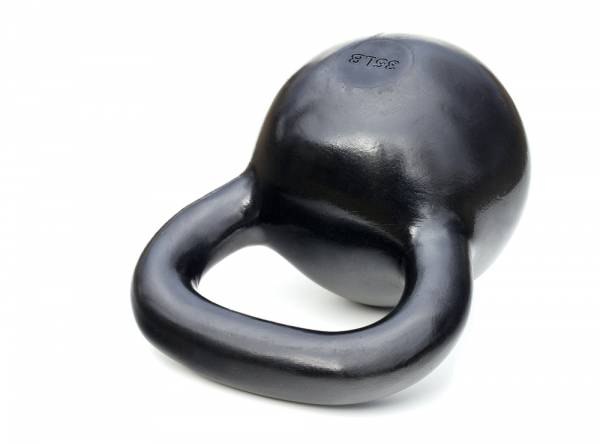It’s a sad statement on the shallow nature of people’s perceptions but many people won’t consider you either fit or strong unless you have a six-pack. I’d even go so far as to say that as a fitness professional having a six-pack may be the second best business card you could have. The best being a before and after picture of one of your clients going from overweight to a six-pack.
As much as it pains me to admit it, I am six-pack challenged. I’ve suffered from this terrible curse all my life. Only during one six month period in my life did I have a six-pack. I was on a fairly high protein diet and my only source of carbohydrates was vegetables and one piece of fruit per day. With such a low energy intake I obviously wasn’t doing much other than lifting weights and standing still. These days that diet would be a quick trip to the hospital for me in a few days.
I’ve rationalized the situation with myself over the years by saying that from a function perspective having a six-pack doesn’t mean diddly. I score quite well in the FMS core tests and can do a number of things that others with a more appealing waistline can’t. So it’s not like my abdominals don’t work, just that they’re not very visible.
Some people are born lucky. I have friends who had a ripped midsection in high school and still do twenty years later despite doing almost nothing. I have another friend whose father was an elite cyclist and it takes him about two weeks of lifting weights and not eating McDonalds to get back his Fight Club physique. Very annoying.
If you’re like me, that’s not the case. These days I am also concerned about the number of studies that show a correlation between performing a lot of exercises that involve spinal flexion, like sit-ups and crunches, and lumbar spine issues. So how to go about training to have a six-pack while avoiding the potential to damage our spines?
I’m going to take one of my favorite Tim Ferriss concepts and pair it up with another from Pavel Tsatsouline to create a killer abdominal workout using Hardstyle principles. Here’s how:
In Hardstyle Abs Pavel explains that using your breath is vital for exceptional abdominal recruitment. Using your breath in the way he recommends gives a stronger activation of all the muscles of the midsection. And when it comes to adding definition it is tension that is possibly the most useful tool.
“Baroreceptors in your abdominal and thoracic cavities register internal pressure and adjust your muscular tension like a volume control knob,” wrote Tsatsouline. Martial artists have been using this trick for years with their intense kiais before and during attacks – this sudden compression of air increases intra abdominal pressure at the moment of impact, effectively turning the body behind the attack into a steel beam that rigidly transmits all possible force into the target.
 In addition to increasing the intra-abdominal pressure we can get more muscles on the job through radiation. Basically, this means that when you engage one muscle all the muscles around it will light up, too. Imagine making a tight fist without all the muscles in your arm being tight also – impossible. This pneumo-muscular effort of using our breath will make sure all of our abdominal muscles are as fired up as they can be.
In addition to increasing the intra-abdominal pressure we can get more muscles on the job through radiation. Basically, this means that when you engage one muscle all the muscles around it will light up, too. Imagine making a tight fist without all the muscles in your arm being tight also – impossible. This pneumo-muscular effort of using our breath will make sure all of our abdominal muscles are as fired up as they can be.
Think of the belly as a can. Just like a can, it has a top and bottom. The top is the diaphragm and the bottom the pelvic floor. Don’t neglect either of these or the amount of tension you can generate will be less than maximal. When you breathe into your belly through your nose your diaphragm draws down the lungs, and like a plunger in a syringe, increases pressure below. The bottom of the box is the pelvic floor – the muscles you use to stop yourself going to the bathroom when you can’t find one.
What we’re going to do first is simple:
- Take a deep, but not full breath through your nose and draw down into your belly. Not a full breath, around 75%.
- Place your tongue against the roof of your mouth.
- Now stop yourself going to the bathroom and hiss sharply. The noise you should make is a TSSSSS. Don’t be shy.
To add the next step we’re going to do what Tim Ferriss describes as the cat vomit exercise:
- Get into a quadruped position, on your hands and knees. Line up your feet behind knees, knees under hips, hands under shoulders.
- We’re going to add some hardstyle sauce to this now and I want you to corkscrew your hands into the ground so you take the slack out of your arms and shoulders. Imagine screwing your hands into the ground so your fingers rotate out, not in. This will give us even more full body tension than when performing this drill standing.
In Tim’s version in The Four Hour Body he asks to draw the belly button towards the spine. Research shows this will actually decrease involvement of the transverse abdominus, so let’s skip that. I just want you to focus on grabbing the ground, corkscrewing the hands, stopping yourself going to the toilet, a belly breath then TSSSSS. If your tail tucks under a little bit during this drill that is acceptable. One thing I like to visualize is the distance between my ribcage and pelvis shortening as my abdominals tighten.
 Take a normal breath after each hard rep to relax. In between sets get up and shake out the tension. This Hardstyle 4-Hour Abs exercise works very well with an easy set of swings in between, using a bell about half the weight of what you’d normally use. Don’t try to do too many reps either – about five or six per set will be adequate. Take a decent rest between sets and then try to get three total sets. I know it doesn’t seem like much but when you’re not used to really making a lot of tension in the abdominals you may be surprised how sore you can get from just a few super hard reps.
Take a normal breath after each hard rep to relax. In between sets get up and shake out the tension. This Hardstyle 4-Hour Abs exercise works very well with an easy set of swings in between, using a bell about half the weight of what you’d normally use. Don’t try to do too many reps either – about five or six per set will be adequate. Take a decent rest between sets and then try to get three total sets. I know it doesn’t seem like much but when you’re not used to really making a lot of tension in the abdominals you may be surprised how sore you can get from just a few super hard reps.
If you clean up your diet and try this after each training session for a few weeks I think you’ll be happy with the results. Not only that, but you’ll likely find that your lower back is feeling stronger, too.
Photos courtesy of Shutterstock.






